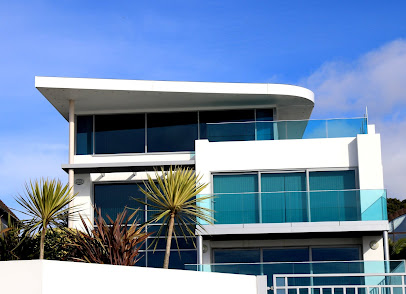Faced with climate change and environmental decline,
architects and designers rise to the occasion by innovating residential
construction methods. They craft eco-friendly house designs that mitigate
environmental harm and advocate for a healthier, more sustainable lifestyle.
This article delves into sustainable sanctuaries – homes that serve as havens
of environmental stewardship and forward-thinking design, setting the standard
for future residential development.
Designing with Sustainability in Mind
At the heart of sustainable house designs lies a commitment to reducing carbon footprint and conserving natural resources. It begins with careful consideration of the building materials used in construction. Sustainable architects opt for eco-friendly materials such as reclaimed wood, recycled steel, and bamboo, which have minimal environmental impact and contribute to improved indoor air quality. Furthermore, sustainable house designs prioritise energy efficiency, incorporating solar panels, passive heating and cooling systems, high-performance insulation, and energy-efficient appliances. These measures reduce reliance on non-renewable energy sources and lead to significant cost savings for homeowners over the long term.
Creating a Connection with Nature
In addition to minimising environmental impact, sustainable house designs seek to foster a deeper connection with the natural world. It is achieved through thoughtful integration of outdoor spaces, such as gardens, green roofs, and outdoor living areas, which provide opportunities for recreation and relaxation and support local biodiversity and ecosystem health. Moreover, sustainable architects prioritise biophilic design principles, which aim to enhance occupants' well-being by incorporating elements of nature into the built environment. Large windows, skylights, and strategically placed indoor plants bring the outdoors inside, creating a sense of tranquillity and connection with the natural world.
Embracing Innovation and Technology
Technological progress is pivotal in shaping the trajectory of sustainable house designs. It provides inventive solutions for diminishing energy usage and enhancing resource efficiency, encompassing smart home automation systems and energy-efficient appliances and fixtures. As an illustration, intelligent thermostats and lighting systems enable homeowners to remotely monitor and regulate energy consumption, while water-conserving fixtures aid in preserving one of our most valuable resources. Additionally, advances in building materials and construction techniques, such as modular construction and 3D printing, offer further opportunities to improve sustainability and efficiency in residential construction.
Promoting Sustainable Lifestyles
Beyond the physical design of the home, sustainable sanctuaries encourage eco-conscious living practices. Homeowners increasingly adopt water conservation measures, waste recycling systems, and sustainable gardening practices. Moreover, incorporating home vegetable gardens and renewable energy sources like wind turbines and rainwater harvesting systems enhances self-sufficiency and diminishes the household's ecological impact.
Resilience and Adaptability
Sustainable house designs also prioritise resilience and
adaptability to changing environmental conditions. It includes designing homes
that can withstand extreme weather events, incorporating natural
disaster-resistant materials, and implementing features like rain gardens to
manage stormwater runoff. The adaptability factor involves designing spaces
that can evolve with the changing needs of occupants, ensuring longevity and
relevance over time.
Conclusion
In conclusion, sustainable sanctuaries represent the future
of residential living – homes that minimise environmental impact and prioritise
occupant health, well-being, and comfort. By adopting eco-friendly materials,
energy-efficient technologies, biophilic design principles, and advocating for
sustainable lifestyles, architects and designers are crafting environments that
cater to the present occupants while preserving the planet for future
generations. As we strive towards a more sustainable future, sustainable house
designs serve as beacons of hope and inspiration, demonstrating that it is
possible to live in harmony with nature while enjoying the comforts of modern
living.
